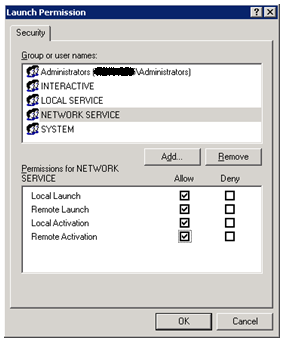2.1 조작하려는 엘리먼트 선택하기
- jQuery는 우리에게 익숙한 CSS문법을 사용한다.
- jQuery 정의 메서드 역시 CSS문법을 확장해서 사용한다.
2.1.1 기본 CSS 셀렉터 사용하기
- a - 모든링크(<a>) 엘리먼트와 일치하는 셀렉터
- #specialID - specialID를 아이디로 가지는 엘리면트와 일치 셀렉터
- .specialClass - specialClass를 클래스로 가지는 셀렉터
- a#specialID.specialClass - 아이디가 specialID이고 specialClass를 클래스로 가지는 링크와 일치하는 셀렉터
- p a.specialClass - <p> 에리먼트 내에 선언되고 specialClass를 클래스로 가지는 모든링크와 일치하는 셀렉터
- 몇몇 예외사항을 제외하고 CSS3를 완벽하게 준수한다.
2.1.2 자식셀렉터, 컨테이너 셀렉터, 어트리뷰트 셀렉터
- p > a - 자식셀렉터
- a[href^=http://] - 어트리뷰트 셀렉터 (^)는 값의 시작부분이 일치함을 의미함
- form[method] - 특정 어트리뷰트를 가진 셀렉터 선택
- input[type=text] - 일치하는 어트리뷰트를 가짐
- a[href$=.pdf] - 끝값이 일치하는 어트리뷰트 셀렉터
- a[href*=jquery.com] - 문자열을 포함하는 어트리뷰트 셀렉터
- li:has(a) - <a>엘리먼트를 포함하는 모든 <li>엘리먼트와 일치한다.
2.1.3 위치로 선택하기
- :first - 첫번째 일치 엘리먼트
- :last - 마지막 일치 엘리먼트
- :first-child - 첫번째 자식 엘리먼트
- :last-child - 마지막 자식 엘리먼트
- :only-child - 형제가 없는 엘리먼트
- :nth-child(n) - n번째 자식 엘리먼트
- :nth-child(even|odd) - 짝수 또는 홀수 자식 엘리먼트
- :nth-child(Xn+Y) - 공식에 따른 엘리먼트 ex)li:nth-child(3n)
- :even / :odd - 짝수 홀수 엘리먼트
- :eq(n) - n번째 일치 엘리먼트 (인덱스 0부터 시작)
- :gt(n) - n번째 엘리먼트(포함되지 않음) 이후의 엘리먼트와 일치
- :lt(n) - n번째 엘리먼트(포함되지 않음) 이전의 엘리먼트와 일치
- 자식셀렉터는 1부터 시작
2.1.4 jQuery 정의 셀렉터 사용하기
- :animated - 에니메이션 적용된
- :button - 모든 버튼
- :checkbox - 체크박스엘리먼트
- :checked - 선택된 체크박스
- :contains(foo) - 문자열 foo를 포함하는 엘리먼트
- :disabled - 비활성화 상태인 모든 폼엘리먼트
- :enabled - 활성화 상태인 모든 폼엘리먼트
- :file - 파일엘리먼트
- :header - 헤더 엘리먼트
- :hidden - 감춰진 엘리먼트
- :image - 폼 이미지 선택
- :input - 폼 엘리먼트만 선택(input, select, textarea, button)
- :not(filter) - 필터의 값을 반대로 변경
- :parent - 빈 엘리먼트 제외 텍스트포함 자식엘리먼트를 가지는 엘리먼트
- :password - 패스워드 엘리먼트
- :radio - 라디오 버튼
- :reset - 리셋 버튼
- :selected - 선택된 엘리먼트
- :submit - 전송 버튼
- :text - 텍스트 엘리먼트
- :visible - 보이는 엘리먼트
2.2 새로운 HTML 생성하기
2.3 확장된 엘리먼트 집합 관리하기
2.3.1 확장된 집합의 크기 결정하기
2.3.2 확장 집합에서 엘리먼트 획득하기
2.3.3 확장 엘리먼트 집합 재편성하기
- $('img[alt]').add('img[title]') - 엘리먼트를 확장집합에 추가한다.
- $('p').add('<div>안녕!</div>') - 새 html 생성해서 추가
- $('img'[title]').not('[title*=puppy]') - title 어트리뷰트를 지닌 모든 img엘리먼트 선택할때 puppy를 포함은 제외(true를 제외)
- $('img').addClass('seeThrough').filter('[title*=dog]') - not 메서드와는 반대의 결과 (부합하지 않는 false를 제외)
- $('*').slice(0,4); - 전체 엘리먼트에서 처음부터 4개의 엘리먼트를 포함한 집합생성
- $('*').slice(4); - 4개 이후(5번째 부터)에서 끝까지의 확장 집합생성
2.3.4 관계를 이용해 확장집합 얻기
- parent() - 모든 확장 엘리먼트의 바로 위 부모로 구성된 엘리먼트
- parents() - 모든 확장 엘리먼트의 조상으로 구성된 확장집합 반환(root 미포함)
- prev() - 각 확장 엘리먼트 바로 이전 형제로 구성된 확장집합
- prevAll() - 각 확장엘리먼트 이전에 나오는 모든 형제로 구성된 확장집합
- sibilings() - 확장 엘리먼트의 모든 형제를 포함하는 확장집합을 반환
2.3.5 확장집합을 이용하는 기타 방법들
2.3.6 jQuery 체인 관리하기
'Web Platform' 카테고리의 다른 글
| [펌]jQuery in Action 정리 4장 - 이벤트 -모든것의 시작 (0) | 2011.02.15 |
|---|---|
| [펌]jQuery in Action 정리 3장 - jQuery로 페이지에 생명 불어넣기 (0) | 2011.02.15 |
| [펌]jQuery in Action 정리 1장 - jQuery를 시작하며.. (0) | 2011.02.15 |
| [JS] 자바스크립트 쿠키 설정, 추출, 삭제 예제 (0) | 2011.01.31 |
| HTML Table Add Row - innerHTML vs. DOM vs. cloneNode (1) | 2010.08.02 |



















